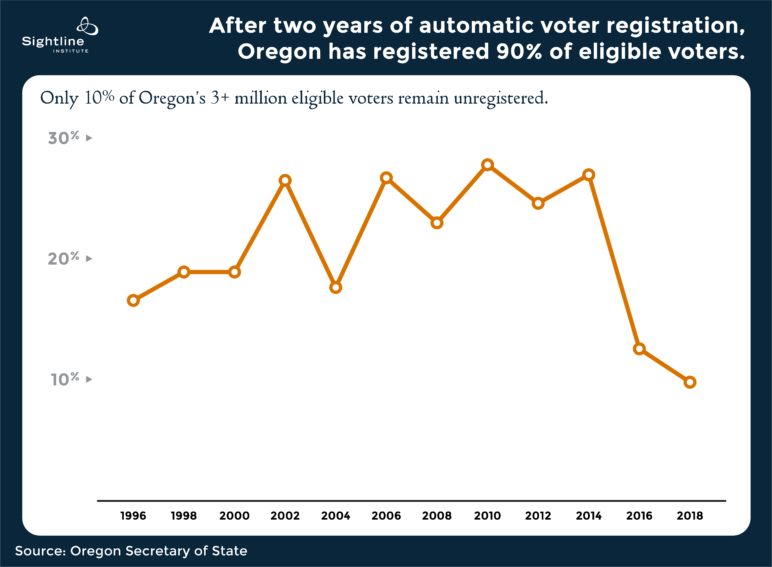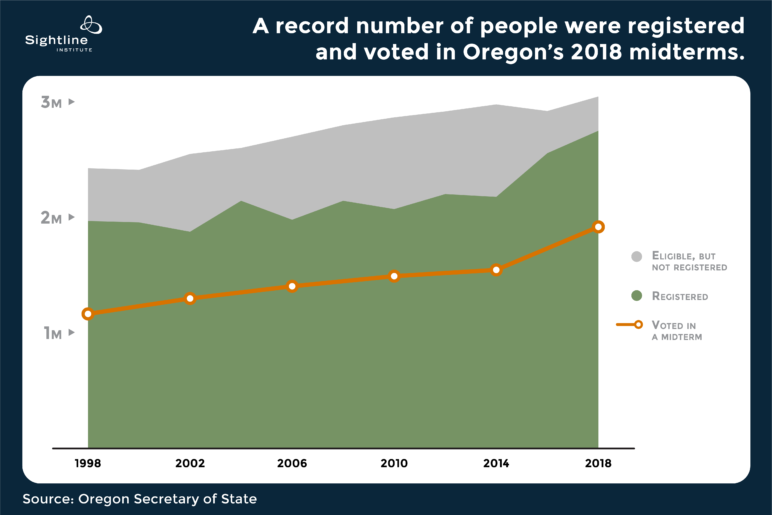In November, the United States hit a 50-year high for voter turnout in a midterm—49 percent. Oregon blew that record out of the water, where 63 percent of eligible Oregonians turned in a ballot. That’s the highest midterm turnout Oregon has seen in at least a quarter-century.
Swing states usually see the most voter turnout but Oregon consistently makes the top ten, showing that voter-friendly policies pay off for democracy. The state’s had vote-at-home for decades already, plus Oregonians can register to vote or update their registration online. In 2016, the state began automatically registering anyone who proved citizenship by getting an Oregon ID card or driver’s license. Now, 90 percent of eligible voters are registered in the state—and that will continue to rise. Even with a growing population, Oregon has an admirably low rate of eligible but unregistered voters.

When voters are registered and receive a ballot in the mail, many of them vote.

Other states could follow Oregon’s lead and empower voters. Imagine if two-thirds of Americans voted in every midterm election—instead of less than half—simply because states decided to lift roadblocks. More people would have skin in the game. And elected officials would have a more engaged electorate to answer to.
Note: There is no national standardized data set for voter turnout. The Election Project uses a different methodology, estimating Oregon had 62 percent voter turnout, where the Oregon Secretary of State’s numbers put it at 63 percent turnout. The Election Project’s estimates slot Oregon as the fifth state for voter turnout in 2018, but Oregon’s numbers have it tied with Colorado for second place, behind Minnesota.
Want to stay up-to-date on our original research about democracy reforms in Cascadia? Sign up for our newsletter. We send it out a few times a month and promise we’ll never spam you.
[button link='{“url”:”https://www.sightline.org/signup/”,”title”:”Sign Up Here”,”target”:”1″}’ color=”green”]

